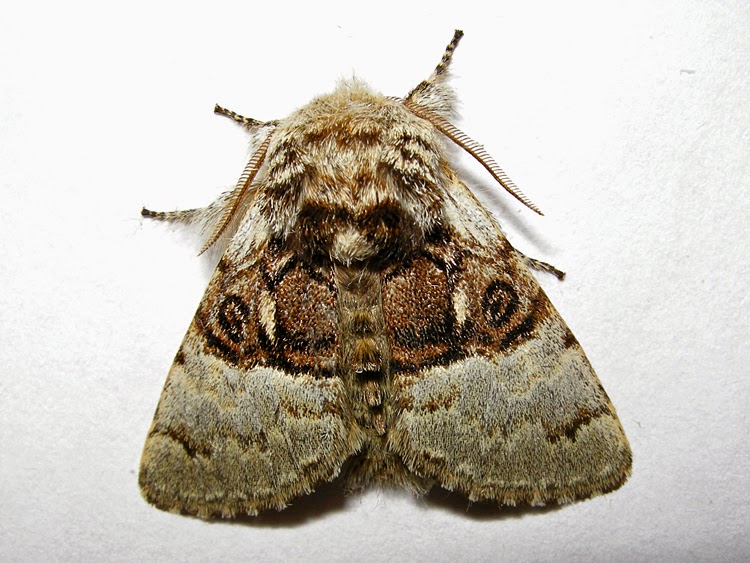When I potted the second I thought it looked different.
This paragraph is not what I originally posted here - I edited this in 2019. To cut a long story short, after quite a convoluted process I eventually reached the conclusion, wrongly as I now know, that it was Broom Flat-body Agonopterix scopariella, a new species for me. Fast-forwards to 2019 when I'm dissecting moths from 2018, and I have a female moth which I was pretty sure was Ruddy Flat-body Agonopterix subpropinquella, but wanted to check the genitalia to make certain. They were similar to, but not identical to, the image on Dissection Group website, so I also looked at the diagrams in MOGBI. Likewise, similar but sufficiently different to warrant a more careful exclusion of other species. None of the diagrams for other similar species had gentilia anything like it, except perhaps scopariella, at a bit of a stretch. It wasn't that, but just to dot the i's and cross the t's I had a quick look at the Norfolk Moths page for that species, with a view to following links to see photos of its genitalia. There staring me in the face was my own photo (below) of my only record of Agonopterix scopariella, and now with the best part of 4 more years' experience under my belt it looked worryingly similar to Agonopterix subpropinquella, and indeed the moth I was dissecting right now. Surely I had stuffed up? Fortunately I had set the genitalia on a microscope slide and therefore had the opportunity to re-visit it. It was indeed Ruddy Flat-body Agonopterix subpropinquella. I hadn't known, even until today, that this species could show tiny white spots, but it turns out it can. Bummer. As I've not seen another since that's one that I now have to delete from my list, and revise the submission while I'm at it.
Ruddy Flat-body Agonopterix subpropinquella (female, gen det), North Elmham, 7th April
Last night we went to the patch but just before dusk our search for lepidoptera or other interesting insects was completely useless. Absolutely nothing on the trunks and only the odd fly flying. As darkness fell nothing was showing in the headlights either. Dave was getting in his car to go when he found the first moth of the evening, a nice Brown-letter Flat-body Agonopterix alstromeriana. I then drove off finally seeing a few moths in the headlights, one of which I stopped to look at - a fine Water Carpet.
Water Carpet, Beetley, 8th April
Back at home it was true to form. Not a single micro and not many macros. One was new for the year though, a very smart Nut-tree Tussock.
Nut-tree Tussock, North Elmham, 8th April
The rest were 4 Small Quakers, 2 Clouded Drabs, 5 Hebrew Characters and 3 Early Greys.
Had this caterpillar the other night and can't identify it. Anyone know what it is?
unidentified caterpillar, North Elmham, 7th April

%2C%2BNorth%2BElmham%2C%2B7-Apr-15%2B(A)%2B(2).JPG)
%2B(3).JPG)

%2B(1).JPG)
%2B(3).JPG)
No comments:
Post a Comment